Three important allegorical reliefs depicting the follies of wealth.
Flemish, first half of the 17th century.
Each measures 29 x 24.9cm including frame.
The panels are after a series of engravings by Willem Van Swanenberg, c.1609, entitled "Allegories of the Misuse of Worldly Property”.
Each relief is carved with exceptional quality and depict:
- The Allegory of Transience
A simply furnished room contains a sack of gold at its center, surrounded by open jewelry boxes, treasures, silver cups, and other riches. Seated atop the sack is a female figure holding an anchor, just as a nobleman reaches to take it away. From the right, Death approaches, poised to strike the fortune seeker with an arrow.
This striking, deeply sculpted high relief is accompanied by an inscription:
“Namque ubi Mors trucibus supra caput adstitit armis / Hei, quam hunc nullo pondere nummus erit.”
(“For when Death stands above the head with fierce weapons, alas, how weightless wealth will be.”)
- The Costume of Dignity
Cupid sits atop a high rock, blindfolded, pulling up a rope with his right hand. In the lower sling of the rope, a nobleman kneels, striving to climb the steep rock face with its aid. Behind Cupid lie symbols of power and wealth: a scepter, crown, sword, chalice, and other treasures.
Below the scene, the inscription reads:
“Caeca voluptatem more exceptura Cupido. Evehit ad summas te violenter opes.”
(“Blind Cupid, driven by desire, lifts you violently to the heights of wealth.”)
- Satan as a Seducer
Set in a Dutch interior filled with gold bags and overflowing chests, a female figure stands atop an open money bag, holding an anchor in her hands. A richly dressed man reaches for her, urged on by the devil, who simultaneously restrains the figure, preventing her escape.
This striking and deeply sculpted high relief bears the inscription:
“Sed cum plena turget saeculus, ore ponitur in intido stes male tuta luto.”
(“But when the age swells with abundance, it is set upon treacherous mire, where you stand but poorly secured.”)
The reverse of each relief bears a catalogue description in German and old collection numbers; Das Trachten nach Worden (The pursuit of Worden), numbered 40 and 982; Satan als Verführer (Satan as a seducer), numbered 41 and 983; and Die Vergänglichkeit (The Transience Tune), numbered 42 and 984.
Each relief is in fine condition, the relief with the figures of a man, death and hope has restoration to one hook of the anchor and two of the male figures fingers are missing.
Provenance:
Jacques and Galila Hollander, Paris;
Christie's London, 2 December 2014, lot 49;
Where acquired by Aso O. Tavitian.
The full catalogue descriptions translated into English are:
1518 The Transience, Relief, Allegory. Simply equipped room. In the middle of it a bag of gold, surrounded by open jewellery, treasures, silver cups, etc. On the sack is a female figure with anchor, which a nobleman just wants to take away. From the right, death is approaching, throwing an arrow at the fortune hunter. Strong, often subcut high relief with saying: Namque ubi Mors trucibus supra caput ad stihit armis / Hei, quam hune nullo pondere nummus erit. Wonderful work. Flemish. 17. Year
Wood. Height 20, width 15 cm.
———————————
1519 The costume of dignity, relief, allegory. Cupido sits on a high rock, his eyes blindfolded, and pulls up a rope with his right hand, in whose lower sling a nobleman kneels, who climbs the rock face in help. Behind Cupid are sceptre, crown, sword, chalice and treasures. Below the illustration: Caeca voluptatem more exceptura Cupido. Evehit ad summas te violenter opes. Interesting piece. Flemish. 17. Year
Height 20, width 14 cm. In Frame.
———————————
1520 Satan as a seducer, relief. In a Dutch room, in which gold bags and filled chests are, a female figure stands on an opened money bag, holding an anchor in her hands. A richly dressed man tries to take them away, to which the leufel encourages him by holding back the figure at the same time. Strong, often subcut high relief, including the words: Sed cum plena turget Saeculus ore ponitur in intido stes male tuta luto. Interesting piece. Flemish. 17. Year
Wood. Height 19.8, width 14.2 cm.
The original descriptions in German are:
1518 Die Vergänglichkeit, Relief, Allegorie. Einfach ausgestattetes Gemach. In der Mitte desselben ein Sack mit Gold, umgeben von offenen Schmuck-schatullen, Silberpokalen usw. Auf dem Sacke steht eine weibliche Figur mit Anker, die ein Edelmann eben wegnehmen will. Von rechts naht der Tod, einen Pfeil auf den Glücksjäger schleudernd. Starkes, oft unterschnittenes Hochrelief mit Spruch: Namque ubi Mors trucibus supra caput ad stihit armis / Hei, quam hune nullo pondere nummus erit. Treffliche Arbeit. Flämisch. 17. Jahrh.
Holz. Höhe 20, Breite 15 cm.
———————————
1519 Das Trachten nach Würden, Relief, Allegorie. Auf hohem Felsen sitzt Cupido, die Augen verbunden, und zieht mit der Rechten ein Seil hoch, in dessen unterer Schlinge ein Edelmann kniet, der nachhelfend die Felswand ersteigt. Hinter Cupido liegen Zepter, Krone, Schwert, Kelch und Schätze. Unterhalb der Darstellung Spruchband: Caeca voluptatem more exceptura Cupido. Evehit ad summas te violenter opes. Interessantes Stück. Flämisch. 17. Jahrh.
Höhe 20, Breite 14 cm. In Rahmen.
———————————
1520 Satan als Verführer, Relief. In einem niederländischen Gemache, in dem Goldsäcke und gefüllte Truhen, steht auf einem geöffneten Geldsack eine weibliche Figur, in den Händen einen Anker haltend. Ein reichgekleideter mann sucht sie hinwegzunehmen, wozu ihn der leufel animiert, indem el gleichzeitig die Figur zurückhält. Starkes, oft unterschnittenes Hochrelief, darunter die Worte: Sed cum plena turget Saeculus ore ponitur in intido stes male tuta luto. Interessantes Stück. Flämisch. 17. Jahrh.
Holz. Höhe 19,8, Breite 14,2 cm.




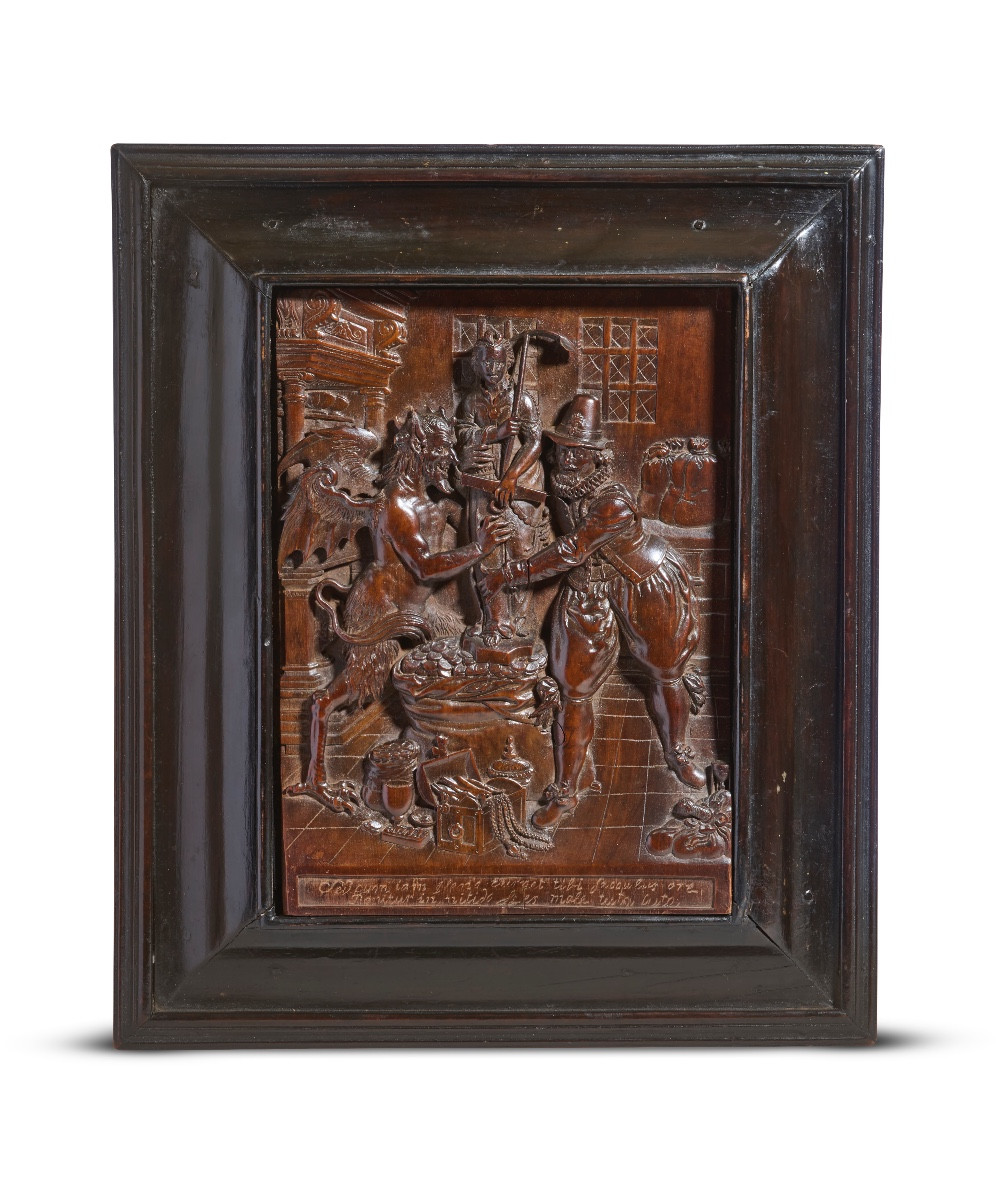








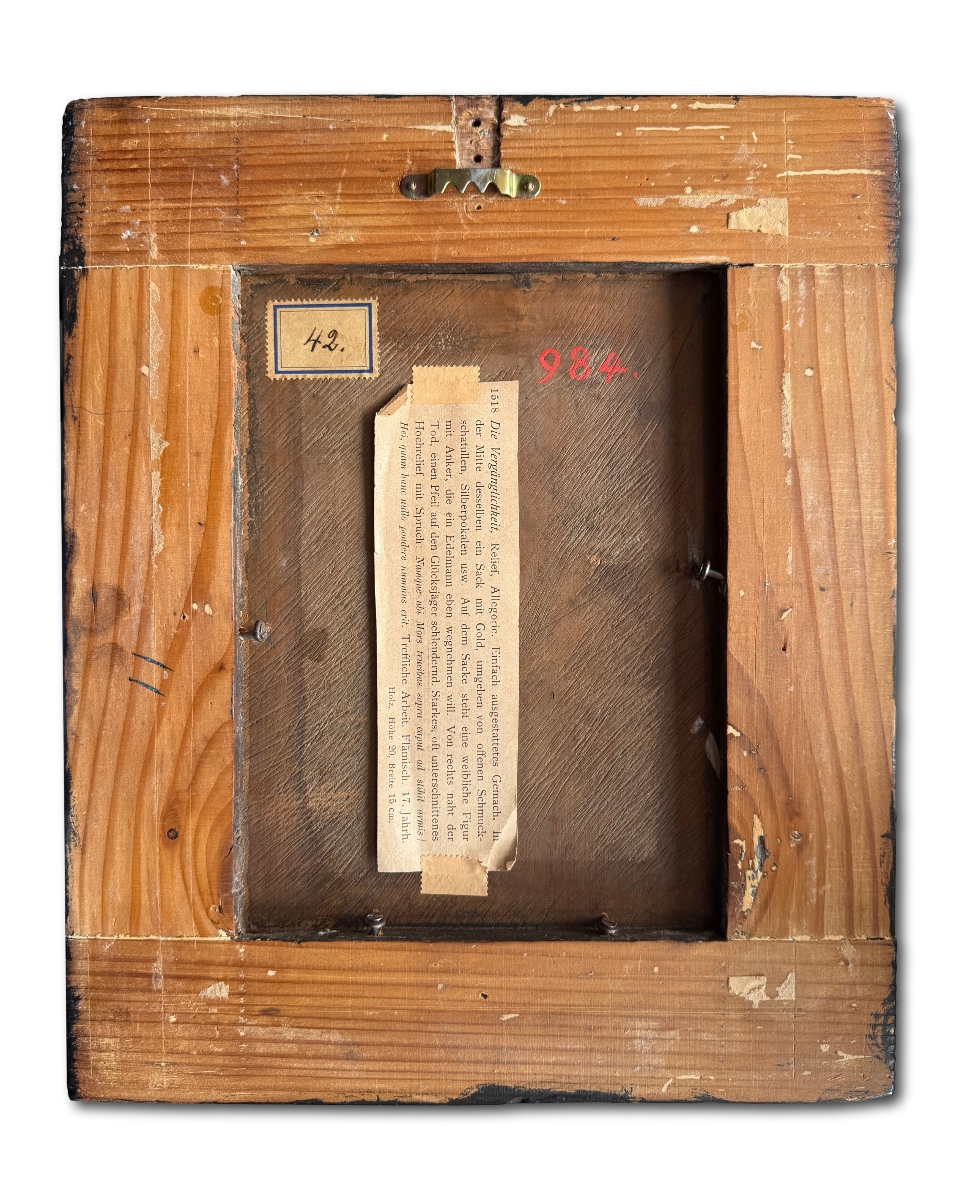














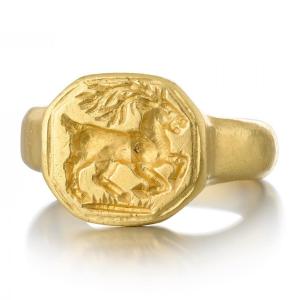




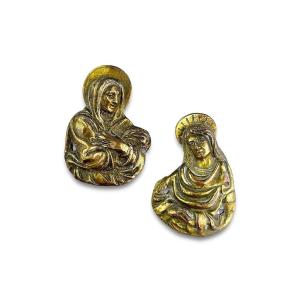
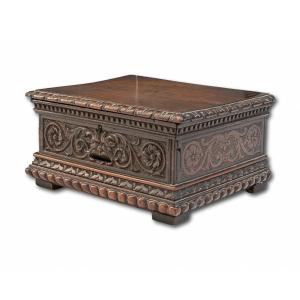

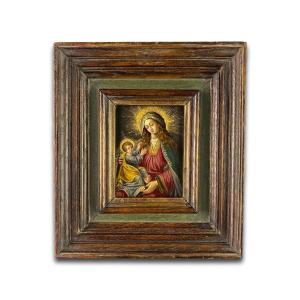




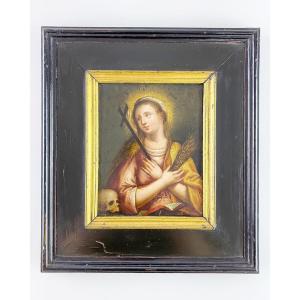


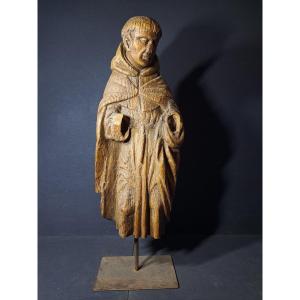





 Le Magazine de PROANTIC
Le Magazine de PROANTIC TRÉSORS Magazine
TRÉSORS Magazine Rivista Artiquariato
Rivista Artiquariato